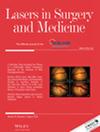Successful Multi-Modal Laser Intervention and Histopathological Evaluation of Multiple Glomangiomas
Abstract
Objectives
Glomangiomas are benign vascular malformations that exist within the spectrum of glomuvenous malformations which consist of varying amounts of glomus cells, vascular spaces, and smooth muscle. Glomangiomas are often treated due to associated pain, particularly when located on pressure areas such as the back or extensor surfaces, which can cause difficulty with certain activities and occupational functions. Histologically glomangiomas consist of prominent dilated vascular spaces lined by glomus cells typically situated in the deep-dermis to subcutaneous fat which limits treatment to modalities capable of reaching the depth of the tumor including excision, sclerotherapy, and laser therapy. To our knowledge laser treatment of glomangiomas has been reported with Nd:YAG (neodymium-doped yttrium aluminum garnet), long-pulsed KTP (potassium-titanyl-phosphate), and PDL (pulsed-dye laser). The objective of our case is to compare the clinical and histologic treatment response of glomangiomas to the 595 nm PDL, 755 nm Alexandrite, and 1064 nm Nd:YAG lasers.
Materials and Methods
Two different laser sessions were performed consisting of PDL (Vbeam Prima Pulsed Dye Laser, Candela), Nd: YAG and Alexandrite (GentleMax Pro, Candela) laser pulses. The GentleMax Pro was utilized for both Nd:YAG and Alexandrite laser pulses as it is capable of functioning in both modalities to deliver 1064 nm and 755 nm wavelengths, respectively. Settings were selected to minimize any risk of potential scarring. Punch biopsies were performed following the second session to assess the histologic response to each laser modality.
Results
Treatment response, as measured by clinical flattening, clearance of obvious blue-red vascular coloration, and resolution of pain, was noted to be most effective for the Alexandrite and Nd:YAG lasers. Procedural and post-procedural pain was noted to be the lowest with Alexandrite. Anatomically, greatest degree of clinical flattening, color normalization with surrounding skin, and sustained clearance was noted for glomangiomas located on acral sites and the trunk.
Conlusions
Optimal treatment of glomulovenous malformation while minimizing patient discomfort may best be achieved with Alexandrite. The exception would be palmar glomangiomas which appeared to respond better to Nd:YAG.

 求助内容:
求助内容: 应助结果提醒方式:
应助结果提醒方式:


